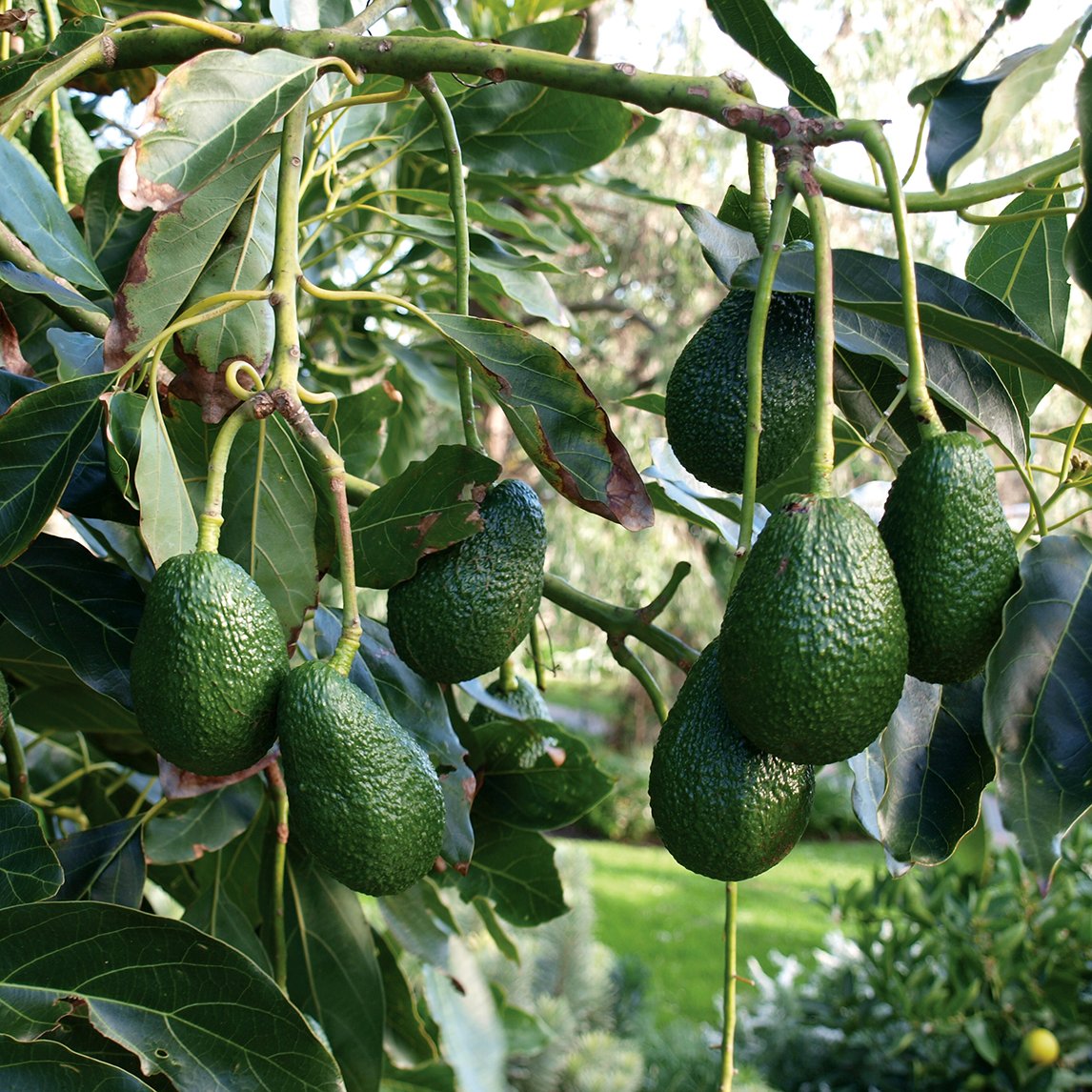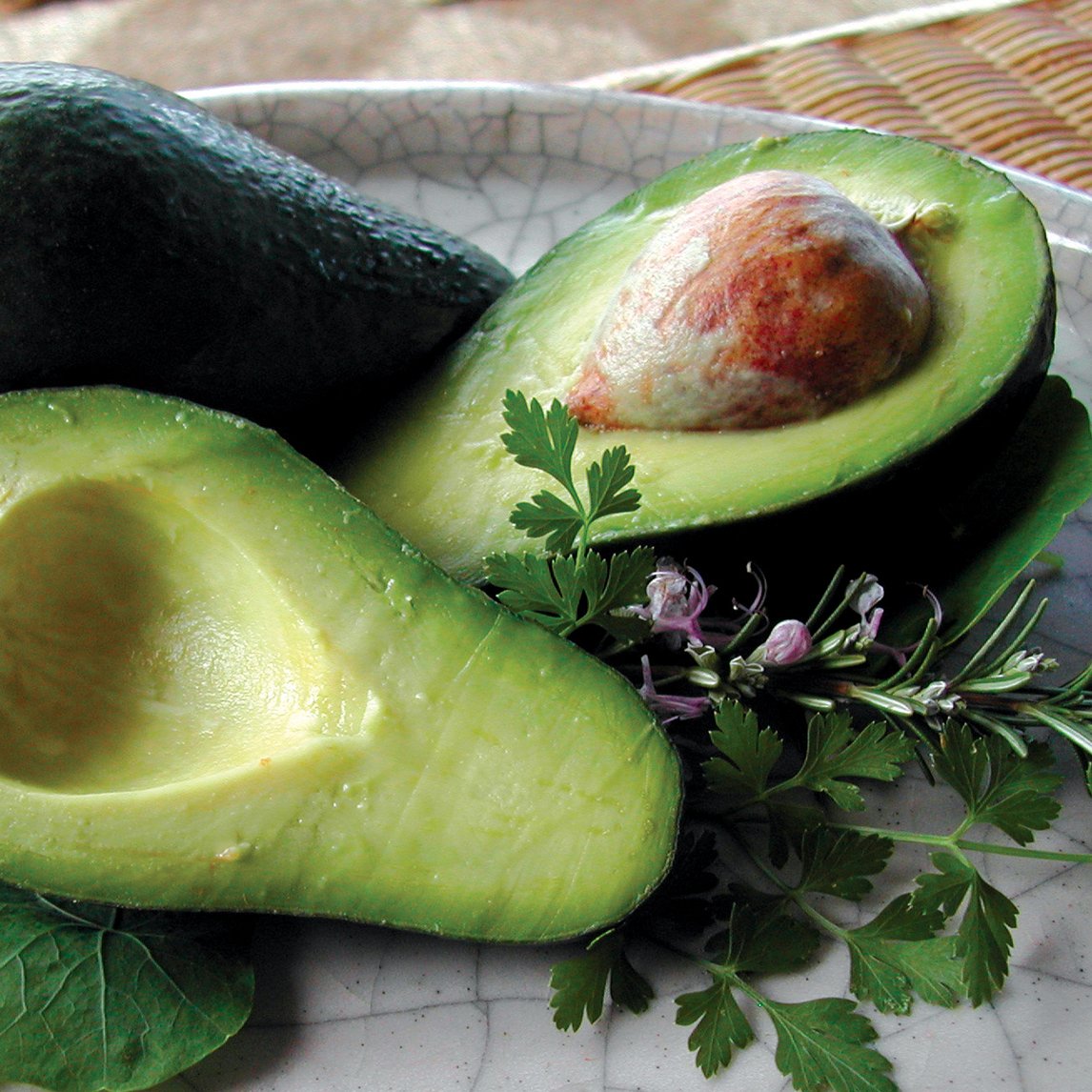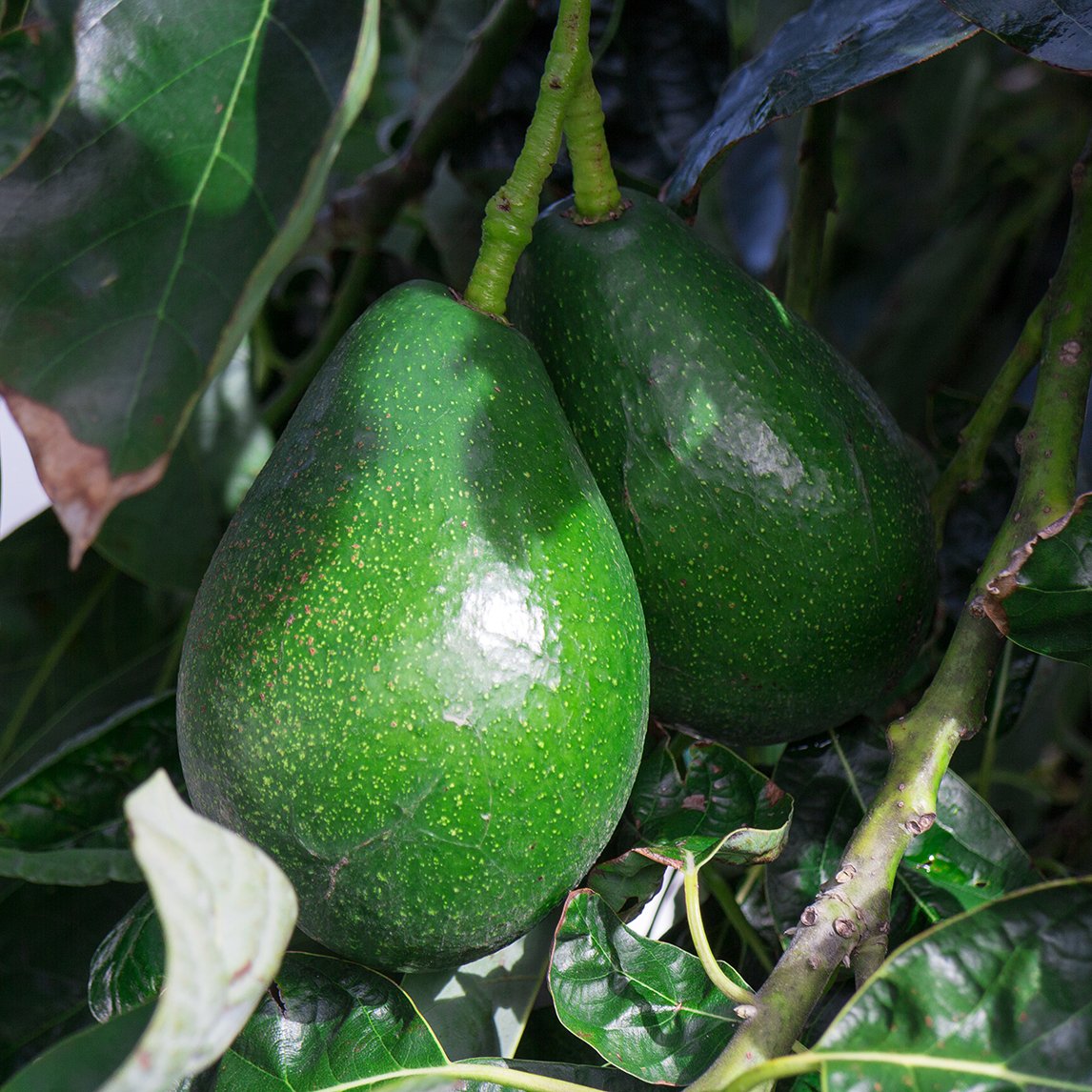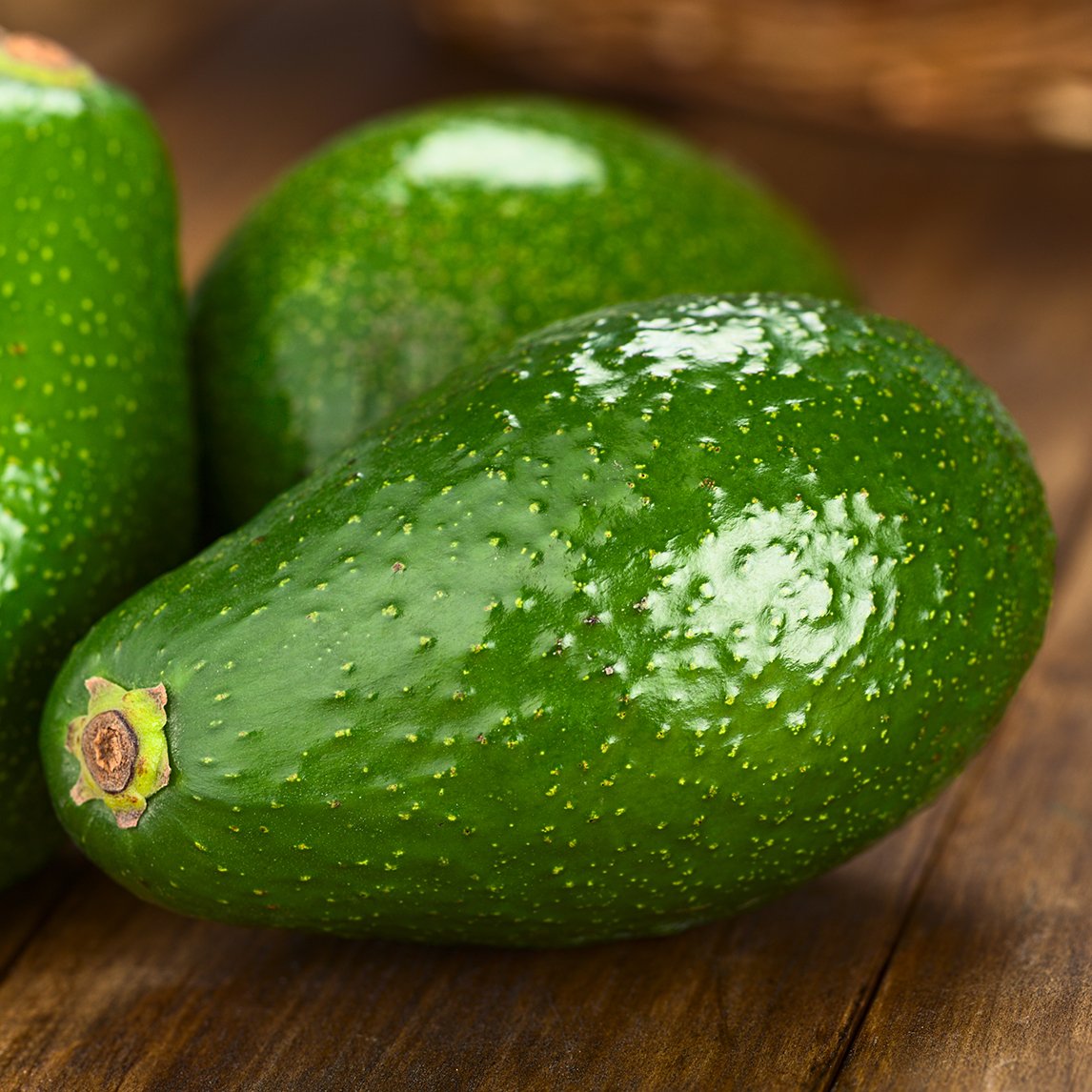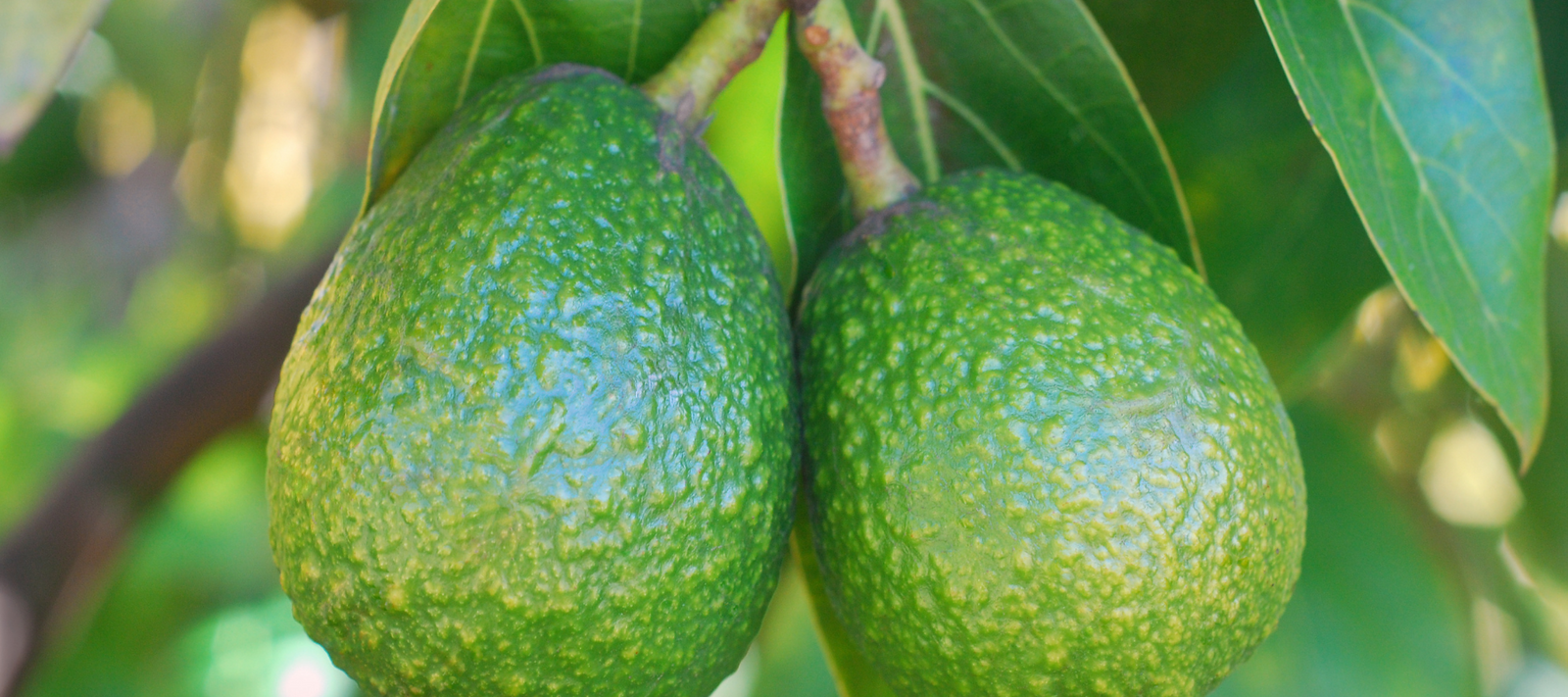
Cultivating avocados
Free-draining, slightly acid soil is essential as avocados are very prone to root rots. Even waterlogging resulting from a freak storm, that drains in just 48 hours, can kill your tree. Extremely frost sensitive when young, they also need to have a sheltered position away from prevailing winds. The young bark can be killed by sunburn, so screen it from hot afternoon sun or paint the trunk with white water-based house paint. Once established avocados can tolerate down to -6°C for short periods.
Avocados have a shallow root system so a good layer of mulch is essential, as is a plentiful water supply in the dryer months. Like citrus fruit, avocados like plenty of nitrogen, pelletised chook manure is ideal from early summer when the fruit is setting.Pruning and training avocado trees
Avocados will naturally grow into large trees, which can make harvesting difficult. So gardeners should prune them back to 2-3m picking height each year. If you don’t regularly prune and you have a large tree, they can still be pruned right back to a few branches, which will re-sprout from dormant buds.
This will lead to leaf and stem growth with no fruit for some time. Pinching out new growth from an early stage is best. Keep the centre of the tree open to discourage fungal diseases. Prune for shape after the fruit has set.
Avocado harvest tips
Avocados can be ‘stored’ on the tree. The fruit will not ripen until after it has been picked, so you can choose – within reason – when to harvest your fruit. Hass avocados last the longest, and can stay on the tree from November to April. However, if you leave mature fruit on the tree beyond a few months, your avocado may tend to biennial bearing, that is, only cropping every two years.
Avocado pollination and flowering patterns
Avocados are a highly productive crop once established, especially when planted with a pollinating partner. There is some confusion about avocado pollination, so let’s set the record straight.
Let’s start with how avocados are classified. Avocados are primarily classified by their flowering sequence: either Type A or Type B. Under ideal conditions, these two distinct flowering patterns dictate the display of either male or female flowers.
For example: a Type A avocado will display female flowers on the morning of day one, then male flowers in the afternoon of day two. Type B avocados will display female flowers on the afternoon of day one, then male in the morning of day two.
This most commonly occurs in temperatures between 20-25oC or above at flowering time, like in the tropics and sub-tropics. In cooler areas and more temperate climates, like those in Melbourne, Adelaide and Perth, flowering sequence can be unpredictable, causing pollen shed which can result in trees being self-pollinating, although planting both A and B types will ensure successful pollination and also help to extend your harvest.
Flowering occurs in spring on new growth. Subsequent fruit should be thinned. Fruit takes up to 12 months to ripen, so both flowers and fruit can be present on the tree at the same time.
Cultivars
Choose ‘A’ types for cooler regions and 'B' types to improve pollination and fruiting
- Hass ‘A’ type: The best backyard variety with excellent flavour and thick, black, warty skin. A tall upright tree.
- Reed ‘A’ type: More like a small cannonball than an avocado, this early-bearing upright tree flowers in late spring – ideal for areas with cold, wet springs.
- Wurtz ‘A’ type dwarf: The smallest-growing of all avocados that can be grown in a pot. Producing delicious, green pear-shaped fruit on weeping branches.
- Bacon ‘B’ type: Quick growing, cold-tolerant, upright trees that bear fruit at an early age. The thin skin is prone to fruit fly attack.
- Fuerte ‘B’ type: Classic pear shaped, thin skinned fruit on a wide spreading tree. Suitable in cold climates.
Tips on growing
- Birds are not a problem for avocados, so there is no need to net your tree, and they suffer fewer pests than apples, making them the best value backyard fruit tree.
- A few weeks prior to planting, improve your soil by digging through a mixture of well-rotted manure and blood & bone.
- Avocados do not need pruning, but it can improve crop development.
See more on Avocado planting and harvest time.



